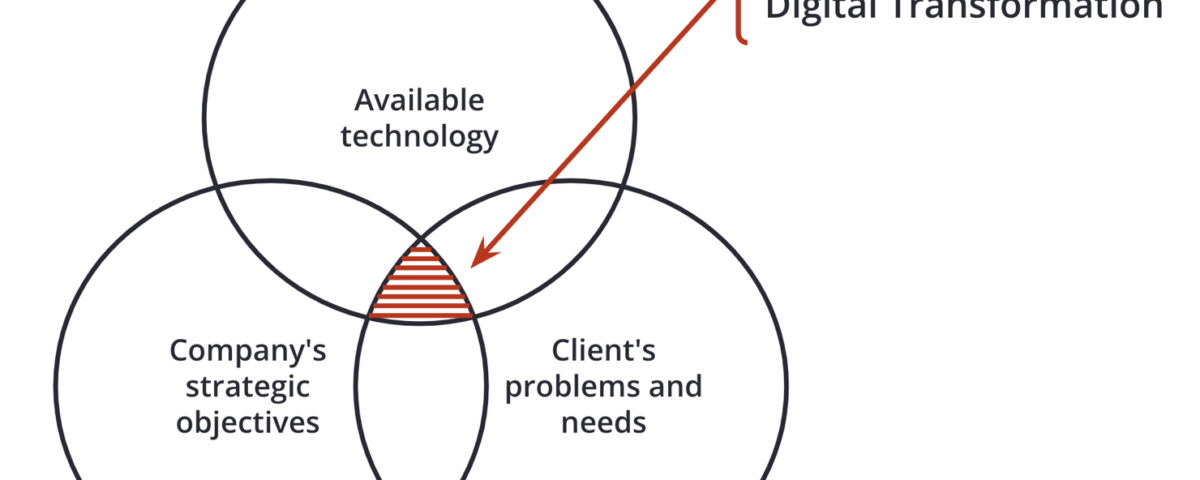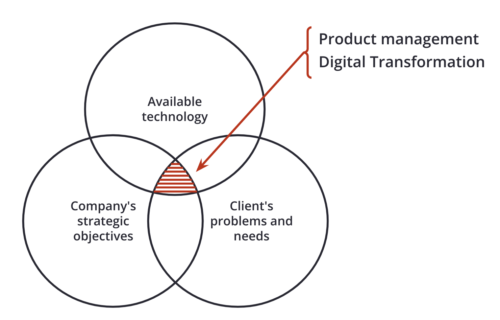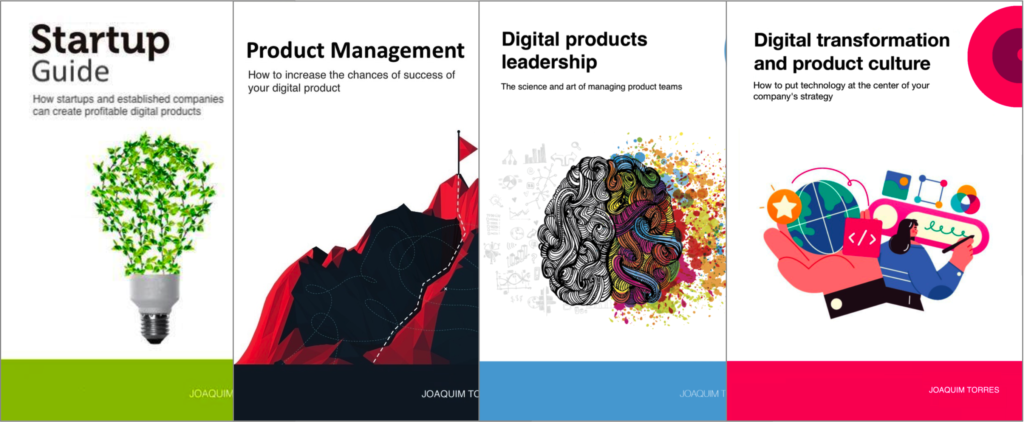
Announcing: Digital transformation and product culture book in English!
31 de January, 2024
Project and product
14 de February, 2024Now that my new book “Digital transformation and product culture: How to put technology at the center of your company’s strategy” is now available in Portuguese and English, I will do as I have done with the other books, and I will publish the chapters of the book here on the blog.
The “About the book” introductory chapter is already available.
Let’s now start with Part 1 on “Concepts” and the first chapter on “The so-called digital transformation”.
Concepts
Anyone who knows me knows that I am a great enthusiast of starting any new venture with a ubiquitous language. This practice, described by Eric Evans in his book Domain-Driven Design, consists of creating a common and rigorous language between developers and users. In my case, the idea is to establish a common language between you, the reader of the book, and me, the author. For this reason, I will start the book by defining some important concepts for successful digital transformations.
Initially, I will present the definitions of the terms digital transformation and digital product management, which are closely related. Next, I will address issues related to uncertainty and digital transformation, types of companies, digital maturity, business models, platforms, and marketplaces.
The so-called digital transformation
When I received the invitation to join Lopes Consultoria de Imóveis to lead its digital transformation, I began to voraciously study the topic to be able to prepare myself for the challenges and opportunities that I would find ahead
In an internet search for a good definition of digital transformation, I found more than 840 million results on Google. When I went to Amazon to look for books on the topic, I found more than 5 thousand books.
I consumed some of this content and spoke to some people who had already participated in digital transformations. I ended up arriving at a definition that helped me along my journey:
DIGITAL TRANSFORMATION
It is the adoption of digital technologies to enhance the business by offering a better experience in the customer journey and operational efficiency gains coming from automation and improvements to the company’s processes.
Digital technologies are tools, systems, and equipment that generate, store, and process information. Some examples of digital technologies are computers, tablets, cell phones, applications (apps), software, websites, algorithms, the internet, artificial intelligence, data science, blockchain, virtual reality, drones, Internet of Things (IoT), 3D printers etc.
New digital technologies are constantly being created and becoming available. At the beginning of 2023, ChatGPT gained great popularity for being a chatbot (chat conversation robot) with artificial intelligence capable of interaction in a conversational mode, which allows it to answer follow-up questions, admit its mistakes, challenge incorrect assumptions, and reject inappropriate requests.
These technologies are increasingly present in our daily lives. In a way, we human beings are also going through a digital transformation, as we use digital technologies for a good part of our needs: to manage our money, to entertain ourselves, to socialize, to move around, to feed ourselves, and so on. I believe it is very difficult to imagine some of our daily tasks without the use of digital technologies, which are already prevalent for people. For this reason, companies must accelerate the adoption of digital technologies with the risk of, if they do not do so, losing connection with their customers.
This definition of digital transformation brings to mind the definition of a well-known discipline in technology companies, which is the discipline of digital product management.
DIGITAL PRODUCT MANAGEMENT
It is the function responsible for making the connection be- tween the company strategy and customer problems and needs through digital technologies. This person must, at the same time, help the company achieve its strategic objectives, solve problems, and meet customer needs.
This proximity of concepts between digital transformation and digital product management makes two very important points clear:
- Digital transformation and digital product management are very close topics and, consequently, people with relevant experience in digital product management can help companies and teams that want to carry out a digital transformation;
- Just as in the development of digital products there is a beginning and a middle, but there is no end, the same happens with digital transformations: they have a beginning and a middle, but no end, they will be constantly evolving.
This last point has to do with the difference between project and product. It is common in companies for people to define initiatives as projects, something with a clearly defined beginning, middle, and end. However, when we are talking about digital transformation, we are talking about something that will have no end, despite having a beginning and a middle.
This will be the topic of my next article! (=
Workshops, coaching, and advisory services
I’ve been helping companies and their leaders (CPOs, heads of product, CTOs, CEOs, tech founders, and heads of digital transformation) bridge the gap between business and technology through workshops, coaching, and advisory services on product management and digital transformation.
Digital Product Management Books
Do you work with digital products? Do you want to know more about managing a digital product to increase its chances of success, solve its user’s problems, and achieve the company objectives? Check out my Digital Product Management books, where I share what I learned during my 30+ years of experience in creating and managing digital products:
- Digital transformation and product culture: How to put technology at the center of your company’s strategy
- Leading Product Development: The art and science of managing product teams
- Product Management: How to increase the chances of success of your digital product
- Startup Guide: How startups and established companies can create profitable digital products



